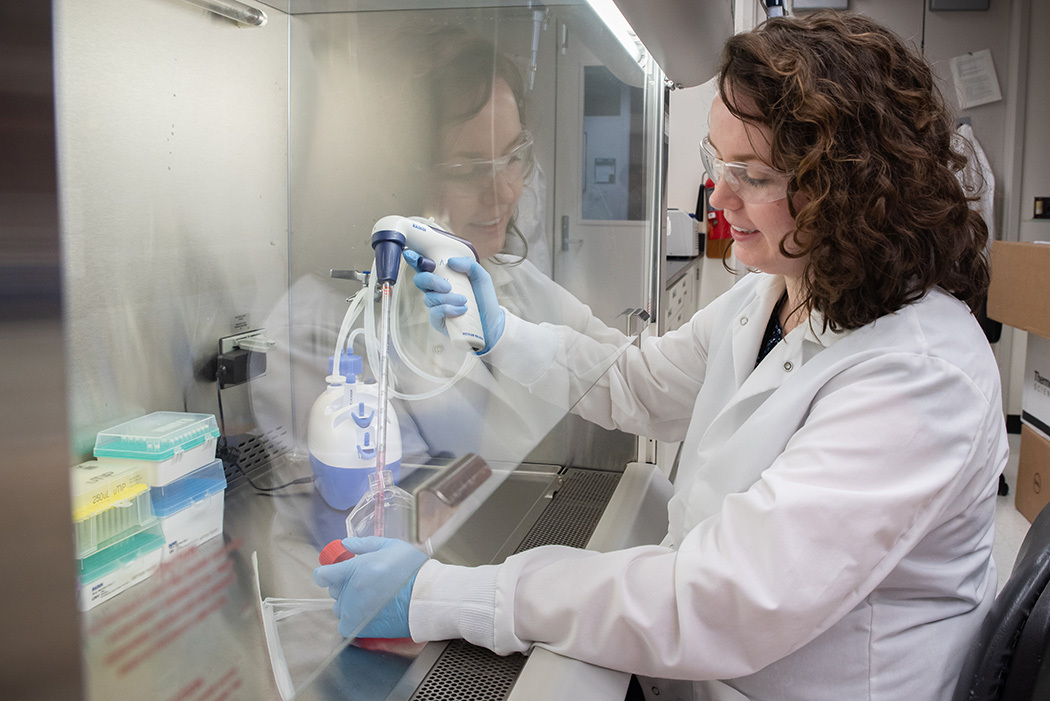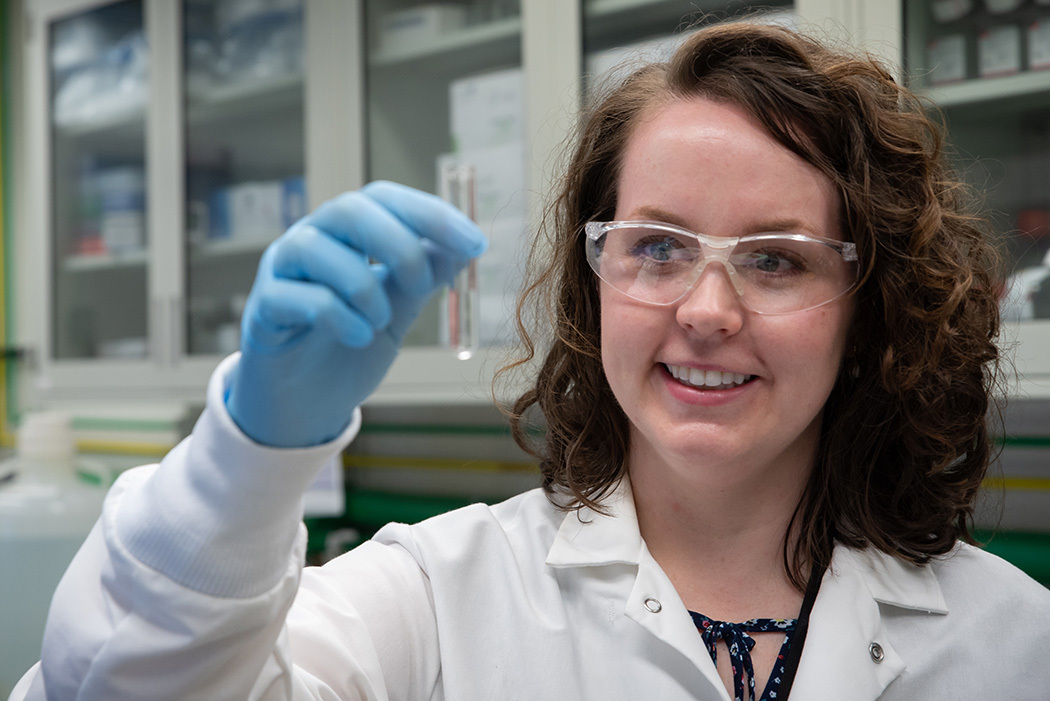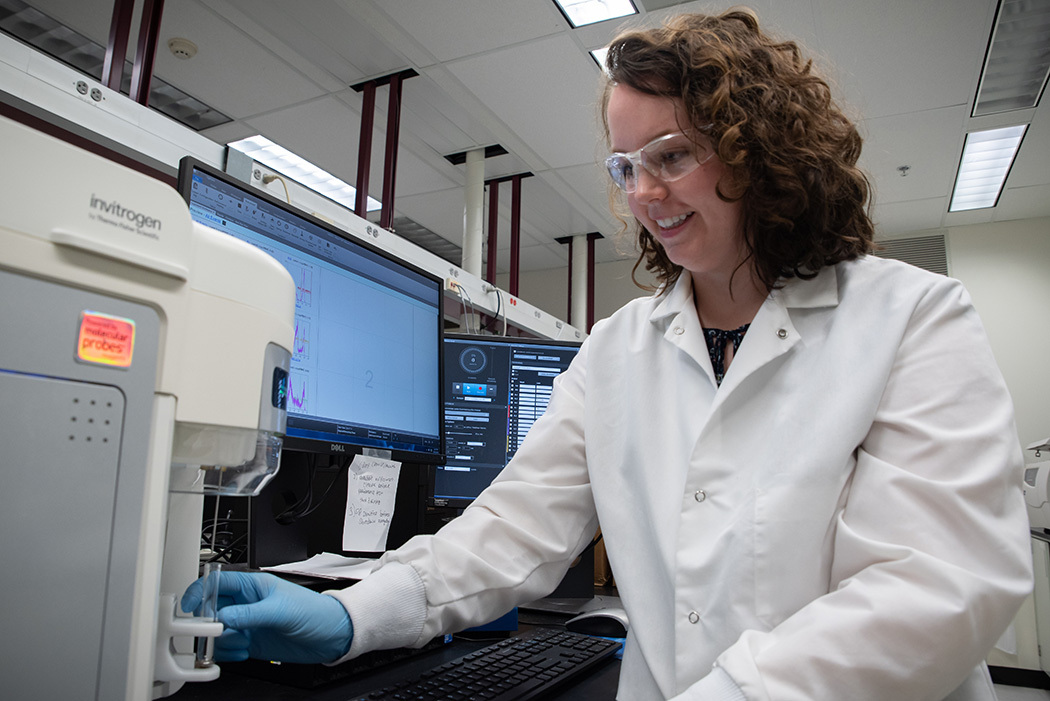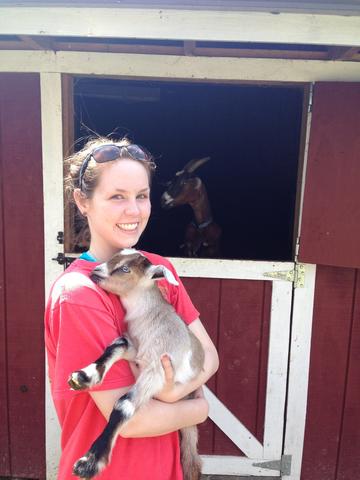Taking Measure
Just a Standard Blog

Researchers are working to stay ahead of future pandemics, even while COVID-19 is still with us. Imagine if, for a future dangerous virus, we could quickly and easily test everyone’s levels of defenses — known as antibodies.
What if we could identify who most needs to get booster shots against current or emerging viruses? We’d all be a lot safer.
That’s what my team at NIST is researching, and we hope it’ll be a reality in the future.
As with all things at NIST, it starts with measurement.
Looking at Cells Up Close
We’ve heard the term “antibodies” used a lot over the last few years, but how do they work?
When you’re exposed to something foreign or new, your body makes a lot of antibodies. They’re not all helpful (though they don’t hurt), but “neutralizing antibodies” can help protect you from future viruses.
Neutralizing antibodies bind to a pathogen (such as those that cause the flu or COVID-19) and block entry into the host cell or neutralize that pathogen in its tracks. It’s like a bodyguard keeping viruses out of your cells. The best way to get these antibodies is to get a vaccine, but our bodies can also make them after an infection.
So if you had COVID-19 and got infected with the same strain again, you might not be as sick the second time because your antibody bodyguards have seen this intruder before!
In my lab, we created a procedure to count how many neutralizing antibodies a person can get either from a vaccine or an infection. Known as a neutralization assay, it allowed us to use a stand-in virus for COVID-19 (one that we could safely work with) to conduct our tests.

To do this, we used a tool that allows us to analyze single human cells as they flow past lasers, so we can look at different parameters of the cell. This tool is called flow cytometry and is used in many aspects of research. Looking at cells is crucial for vaccine development, so it’s an important tool in my work.
This research was challenging because we used two different measurement techniques, one for the flow cytometer and one for more traditional imaging of the cells. The biggest challenge was getting the right number of cells to move through the cytometer, while not having too many cells for our imaging method.
We saw the same levels of neutralization using the two different analysis methods! The potential of using either analysis method means more researchers will be able to use our assay and can compare their work with other scientists. Some researchers don’t have a flow cytometer but can image (or the other way around), so these results mean our assays can be used by more researchers.
Preparing for Future Pandemics
There’s a lot more research to be done in this area, particularly if other labs can replicate our work with the actual COVID-19 virus. Due to safety concerns, we used the substitute virus here, but we are fairly confident that results will be similar with COVID-19 and other viruses. Labs that are equipped to work with more dangerous viruses will need to see if they can replicate our results.

My main goal is that this approach can be used by other researchers or clinical labs to speed up our response to future pandemics. My hope is that this research will be applicable to other fast-spreading viruses, such as the flu or future pandemic viruses.
If our approach is successful, there may be a future in which you can get tested and see your level of antibodies for a variety of viruses (COVID-19, flu, etc.) and figure out which booster shots you most need to get.
If we’d had this rapid understanding of people’s antibody levels early on in the COVID-19 pandemic, we may have been able to reduce deaths and hospitalizations. I hope this work will help us be more prepared in the future.
From Farm Life to Vaccine Researcher

I grew up on a dairy farm, with goats, sheep, chickens and other types of animals. On the farm, we regularly combated bacteria and viruses with vaccines and medicines to keep our animals healthy. Making the animals feel better was so rewarding to me.
My dad was an organic chemist, so the farm was like a lab to me as a kid. We’d do science experiments for fun, such as testing how many germs were on our hands or inanimate objects. (The answer was often quite a lot!) My dad and I also loved to look at pond water under his microscope. A love of science came naturally to me at a young age.
Unfortunately, I also experienced some health challenges. During my senior year of high school, I got mononucleosis and swine flu. I was sick for months. That experience fueled my interest in learning more about viruses and how to prevent them.
Given these experiences, it’s not surprising I became a vaccine researcher!
I got my doctorate in microbiology and immunology, with my dissertation on research into developing a vaccine for human Lyme disease. While it’s not yet publicly available, there’s been a lot of exciting research into this vaccine that would make a difference in many lives.
Staying Healthy With Measurement Science
There’s an exciting future ahead with this type of research. We’re now looking at applying some of these same ideas to other pandemic viruses or, potentially, gene therapy.
Forms of viruses, called viral vectors, are often also used as gene therapy for certain medical conditions. Viral vectors are currently used as therapy for spinal muscular atrophy, as well as inherited retinal diseases. There are also others in clinical trials for breast cancer, skin cancer and rare genetic diseases.
But doctors and researchers have to be careful to ensure these viruses are safe for the patients getting gene therapy, and we are working on assays that could help with that via very precise measurement. We’re looking at how we can use our flow cytometer to measure small viruses and look at what’s in them to ensure they’re as safe as they possibly can be for patients needing these therapies.
I’m very passionate about using science to make people healthier. Whether it’s making gene therapy safer or testing people for antibodies during a pandemic, I’ll keep using measurement science to make the world a healthier place. I hope to keep others safe from the viruses like the ones I’ve experienced.





